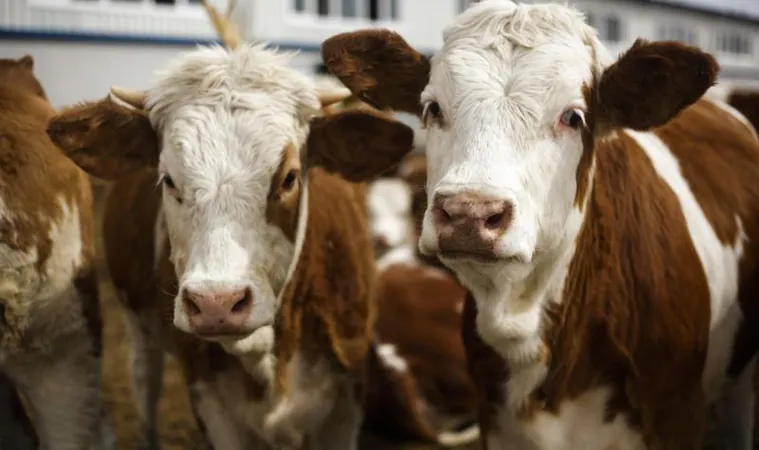
Shocking Discovery: Influenza A Antibodies Common Among US Cattle—What This Means for Livestock and Public Health!
2025-03-26
Author: John Tan
A groundbreaking study has uncovered that a significant number of dairy and beef cattle in the United States are infected with antibodies for influenza A viruses, raising potential concerns for both animal and human health. Conducted by researchers at the University of Missouri, the study reveals that cattle are not only vulnerable to human seasonal flu strains but also swine influenza viruses.
As we mark one year since the H5N1 avian flu first emerged within a Texas dairy cattle herd, this research is more relevant than ever. Traditionally, cattle were not viewed as natural hosts for influenza A viruses until the recent H5N1 outbreak shook the industry.
The research involved an in-depth analysis, utilizing an enzyme-linked immunosorbent assay (ELISA) to test a whopping 1,724 blood samples from cattle across 15 states, particularly focusing on Missouri. These samples reflected a diverse range of over 30 different cattle breeds.
A staggering 34% of the samples tested positive for exposure to influenza A, with findings indicating that both male and female cattle are equally affected. In good news, no samples returned positive for the highly pathogenic H5N1 avian influenza; however, the study did identify 45 positives for various seasonal flu strains, including 2009 H1N1 and swine H3N2 and H1N2 viruses. Intriguingly, some samples even tested positive for multiple strains.
The testing showed that seropositive samples were detected year-round, with peaks during the winter and spring months. This suggests that cattle may be exposed to influenza viruses continuously, highlighting an urgent need for ongoing monitoring.
But the implications of these findings extend beyond cattle. Increased detections of H5N1 in mammals have also been reported, shedding light on a broader health crisis. The USDA's Animal and Plant Health Inspection Service (APHIS) announced new findings, including three additional H5N1 detections in dairy cattle from Idaho—raising the national total to a staggering 993 cases across 17 states since March 2024. Idaho has seen 44 outbreaks, nine of which occurred within just the past month.
Moreover, in a troubling report, APHIS identified 24 additional H5N1 cases in mammals, including 11 domestic cats across several states such as Colorado, Texas, and New York. The virus has even been detected in vulnerable wildlife, including a bobcat in Connecticut, along with skunks, a red fox, black bears, house mice, and a bottlenose dolphin—a clear sign that this threat is spreading.
This alarming trend is a wake-up call for all concerned with animal health, public safety, and the potential for new infectious diseases to emerge. The interconnectedness of animal and human health cannot be overstated; as influenza A continues to adapt and find new hosts, vigilance is paramount. Farmers, veterinarians, and researchers must collaborate more closely than ever to ensure that both livestock and humans remain safe from these evolving threats.
The study serves as a stern reminder: the battle against influenza A is far from over, and with emerging strains and outbreaks affecting both domestic and wild animals, we must stay alert and ahead.

 Brasil (PT)
Brasil (PT)
 Canada (EN)
Canada (EN)
 Chile (ES)
Chile (ES)
 Česko (CS)
Česko (CS)
 대한민국 (KO)
대한민국 (KO)
 España (ES)
España (ES)
 France (FR)
France (FR)
 Hong Kong (EN)
Hong Kong (EN)
 Italia (IT)
Italia (IT)
 日本 (JA)
日本 (JA)
 Magyarország (HU)
Magyarország (HU)
 Norge (NO)
Norge (NO)
 Polska (PL)
Polska (PL)
 Schweiz (DE)
Schweiz (DE)
 Singapore (EN)
Singapore (EN)
 Sverige (SV)
Sverige (SV)
 Suomi (FI)
Suomi (FI)
 Türkiye (TR)
Türkiye (TR)
 الإمارات العربية المتحدة (AR)
الإمارات العربية المتحدة (AR)